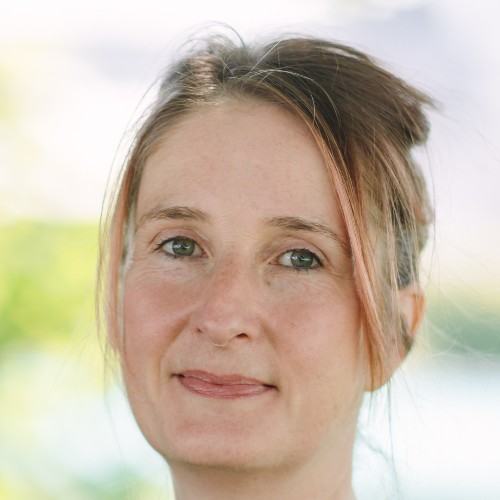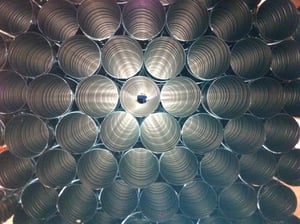Surface Transforms plc (LON:SCE) is the topic of conversation when Hardman and Co’s Analyst Mike Foster caught up with DirectorsTalk for an exclusive interview.
Q1: Mike, there have been estimate downgrades over the past year, can you just tell us where are we now?
A1: The second most important point for investors is the full resolution of commissioning problems associated with the ten-fold ramp up in production capacity. The company has made several announcements about this matter, over recent months, and has been very clear about the developments. This was a classic under-promise in the past six months and the equipment has been working at optimum level for three months now. Remember, this is a ten-fold step-up.
Q2: You say the second most important point is the resolution of the production output, could you just expand on that for us?
A2: The opportunity here is a market in carbon ceramic brake discs, which is rising fast to soon become a £2bn a year market. Surface Transforms is one of two suppliers globally. There are huge barriers to new competitors and indeed the reality of this ten-fold output ramp up goes to show that. The order book trebled to £300m in 2022, having doubled in 2021 and 2020. The order pipeline beyond that has been new near-term potential orders too.
Q3: Can you be clear on that with the firm orders and order pipeline that you’re talking about?
A3: Carbon ceramic brake discs are a growth market and their safety-critical and high-performance nature means literally years of testing by the global car manufacturers before being designed into the new models. That means high visibility that an order is likely as the car markers invest time and money in testing the SCE.
Remember, there are only two suppliers globally. Therefore, we have firm orders – principally from four global mega clients, most of which have now placed several orders with them – and we have high-prospect orders where there have been these dozens and dozens of tests by the manufacturer in the test rig, on the road and in arctic-like or Sahara-style on-road conditions.
Q4: So, the company has plenty of orders but there have been those downgrades last year?
A4: The company is not order constrained, it has been capacity constrained, and the production – particularly, but not exclusively, the furnaces – has now resolved those problems. But there also was a push to the right on the start date of one of its orders, an order where production is now well under way, but it had been scheduled to begin last year.
Normally, production begins 18 to 24 months after the firm order is given and made public. The long flash to bang is because this component is critical to the whole chassis – by the way, the weight saving versus iron brakes is a crucial one of many attributes – so it’s designed in, years before the car rolls off the production line. This order that got delayed had a planned lead time of months, not a short number of years, and that proved too ambitious for the car manufacturers’ total components lead times.
So, never say never, but the overwhelming norm is of a long lead time from firm order, allowing plenty of time pre-launch.
Q5: Can we look at some numbers? You don’t estimate any profits for the company this year?
A5: The firm order book is £300m and the prospective contract pipeline is £393m, so the two together approach £700m. That’s all well and good and it is a huge achievement, but we’ve said there is often a two-year pause to production start, so it’s the order book two years ago which is more relevant to 2023 actual sales. It was around £70m then and an order lasts four or five years, so that’s how that order book ties into this year’s estimated £16m revenue. With overheads, that ties in to breakeven. This is a great R&D business, by the way.
Q6: So, can we look a bit wider and further at the numbers?
A6: There is major capex to expand capacity. Our EPS rises to 2.5 pence in 2024 and 4.1 pence for 2025. It’s noteworthy that we estimate the building of the next stage in capacity, namely to £50m per annum, is achieved without the need to take on debt and that includes the investment in working capital. There is massive investment for the future in R&D, capex and in the customer-facing operations.
So, operational gearing is high and it is in 2025, not before, that we model EBIT margins at 25%, which we see as a conservative figure going forward. 2024 revenue more than doubles and we model 27% for 2025, which we see as a highly achievable figure on an ongoing basis for many years. The existing firm and ‘near prospect’ order book would indicate well over 30% a year compound sales growth for many years.
Hardman & Co recently published a research document in which we summarise how a sustainable EPS of 10.5 pence per share can be modelled to be delivered simply from the current firm orders and near prospects. Several years into the future, but all the ammunition for that is in place right now.
Q7: This is a company with the requirement to deliver big on ambitions, what are the risks involved?
A7: The operational difficulties were all solved in-house and stemmed from a near ten-fold manufacturing expansion. The future comprises a big further capacity increase going into the second half 2024, then more scheduled.
So, Surface Transforms’ growth nature means effective continual capital equipment expansion. The current firm contracts are with global majors and include US, UK and European OEMs, so it’s well spread. We have few worries about revenue demand being there, filling the £75m factory for which the Company is now buying equipment. The position on costs and the engineering down of costs is strong. We look at the track record and have minimal concerns.
The risk is the possible delay in model launches into which they have no input. The Company has confirmed full £20m pa capacity will be available throughout 2H23. 2023 is still about making absolutely sure it exits the year at a revenue run rate well over that £20m, embarking with its future sights on the next, the £50m benchmark, having booked £5m sales for the whole of 2022.










































